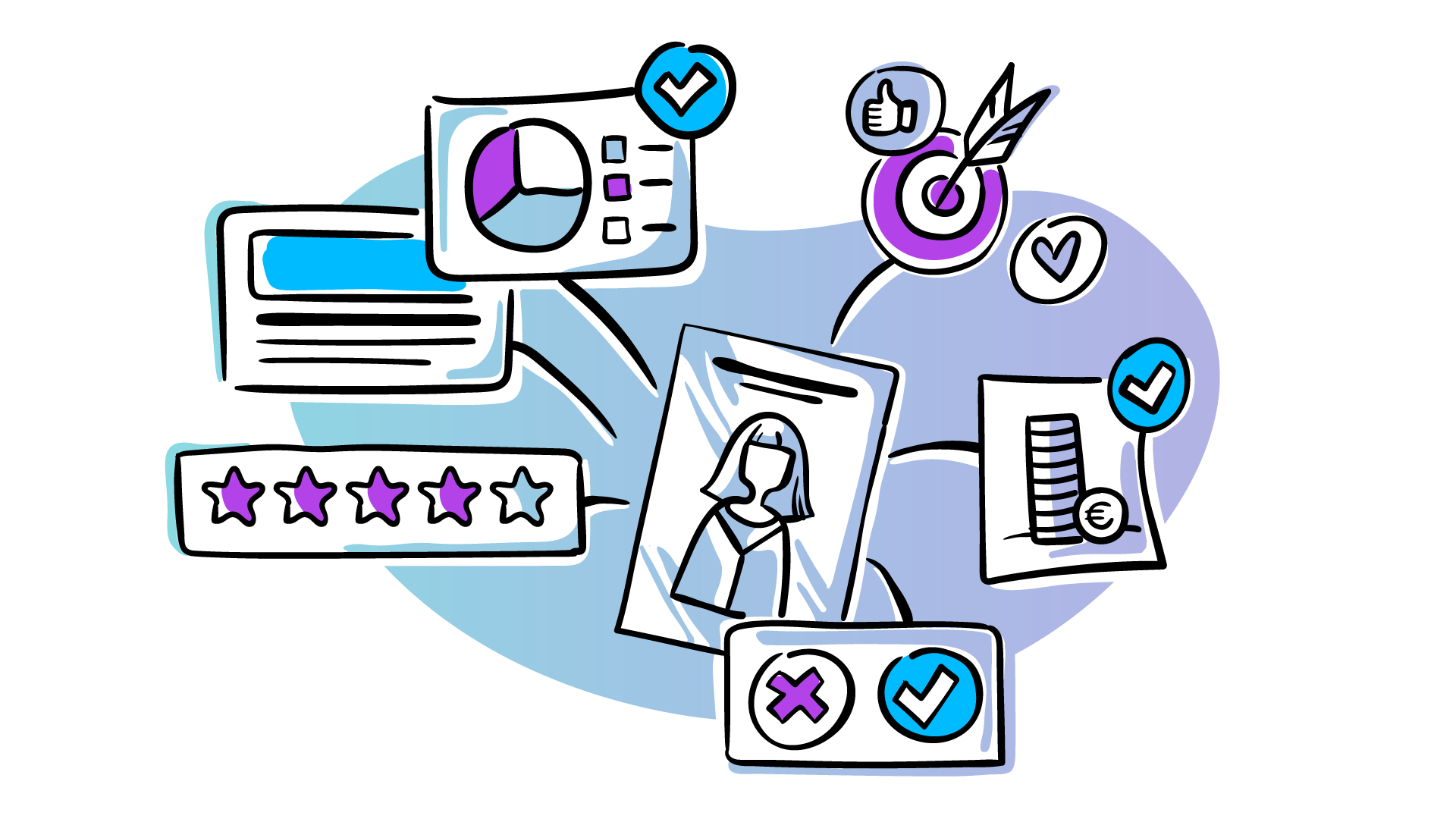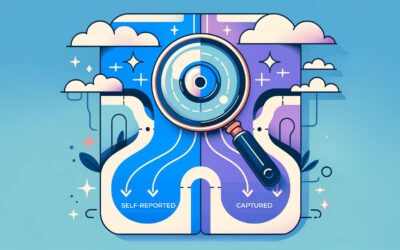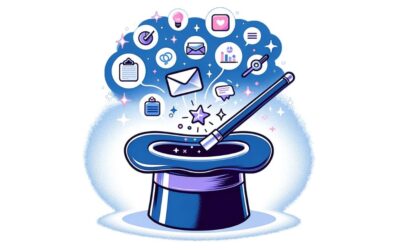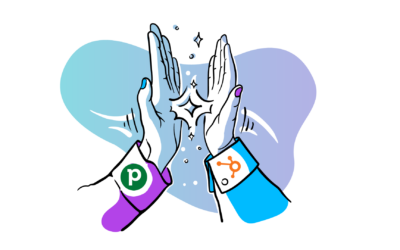Chances are, you’re an experienced B2B marketer or a sales rep who knows about lead generation and lead nurturing.
At one point, you recognized the need for a refined methodology to weed out the not-that-ready leads that are time-consuming, so, you can focus on the best ones.
This is where lead scoring has come into play.
In my previous article on the lead scoring models, I talked about what lead scoring is and the attributes. In this one, I’ll further elaborate on lead scoring with best practices, so you can start taking your business to the next level.
Here are the seven lead scoring best practices I’ll deep dive soon:
1. Define your customer profile
2. Identify the touchpoints in the funnel
3. Align sales and marketing goals
4. Decide on a lead scoring threshold
5. Include negative scoring in your formula
6. Create separate lead scoring formulas for different product segments
7. Refine and update your lead scoring strategy regularly
Back to basics: What is lead scoring?
Lead scoring is the process of identifying leads who are most likely to buy, by assigning them values.
As a highly valuable tool for today’s B2B professionals, lead scoring helps sales reps with:
- Efficiency: weed out the not-that-ready leads, discover the hidden gems in your database, and focus on the best ones.
- Time management: save time by focusing on the leads that matter and leave out the ones that would not convert.
- Profitability: Enjoy closing more deals, leading to an increase in your revenue.
Bonus: Predictive lead scoring, a data-driven approach to predict the most sales-ready leads based on your past engagement data, promises practicality and accuracy. In that case, AI does the job for you.
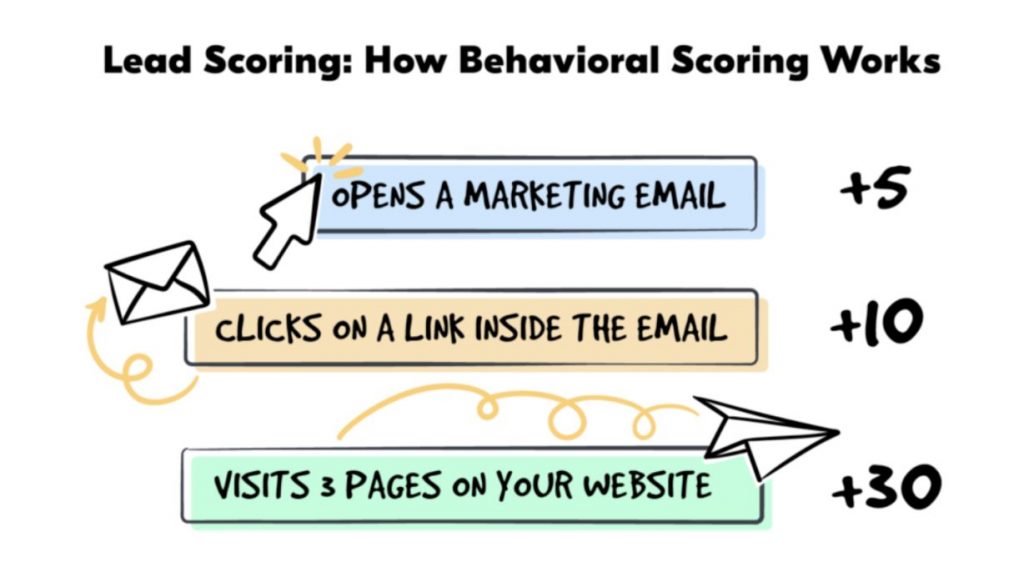
Lead scoring best practices: 7 points to maximize sales potential
If you’re looking for a lead scoring tool, it can be manual or automated solutions that use the points system.
If you proceed with manual lead scoring, you assign scores to each activity yourself.
One other and more efficient option is predictive lead scoring which uses machine learning to assess which leads are likely to convert or drop out of the process based on past engagement data.
Regardless of the lead scoring model, strategy, tactics, or any lead scoring tools you’ll deploy, there are seven points that you should take into consideration before getting started.
Here we go…
1. Define your customer profile
Almost every methodology in marketing starts with this very question: what’s your product or service, and who is your target audience?
So, it’s no surprise that you will get started with lead scoring by defining your personas and customer profile.
Who’s your customer?
How old are they? Where do they work and where do they live? More importantly, does this information matter considering the nature of your business?
What problem do they have, and how does your product or service help them with that?
Let’s start with the definition of a persona.
According to Hotjar, a user persona is a semi-fictional character based on your current or ideal customer.
Depending on your business, you can have multiple personas and develop marketing and sales tactics for each.
Here are five steps to defining your user personas:
- Do your homework – lots of primary (interviews, surveys, etc.) and secondary research (online and offline resources).
- Set behavioral and demographic information – and any other criteria that are relevant.
- Segment your target audience based on their motivations, frustrations, and needs.
- Identify their goals.
- Assess where their needs/motivations and the benefits of your product/service cross.
Let’s go over Outfunnel’s personas, so you can have a better picture of user personas.
As a marketing attribution software with different (and great!) features, we target marketing and sales professionals.
They mostly live in English-speaking countries. With that being said, we have a high number of clients residing in different parts of the world as well.
We segment our personas based on marketing literacy and the CRMs they use rather than only demographics.
The reason why we do that is:
- Outfunnel simply works with certain CRM software.
- Marketing literacy is directly related to the buying intent in our category.
If you ever visit our office, you’ll see our board with some drawings that depict each of our persona.
Once you get to know your prospects better, the view will be much clearer and you will be ready for the next step.
Which is…
2. Identify the touchpoints in the funnel
Maybe you’re already familiar with your user personas, but you and your team feel a bit lost when it comes to mapping out the different stages throughout the conversion.
To make it simpler for you, these are what you need to know to identify the touchpoints in your own funnel until the holy conversion moment:
- How do your customers find you?
- How do you generate leads?
- Which channels do you use?
- What is the first interaction point?
- How long does it take to convert leads?
- What are the channels that bring the highest number of closed deals?
Let’s have a break here and re-read the last question.
Because this will be the defining moment for your own lead scoring formula.
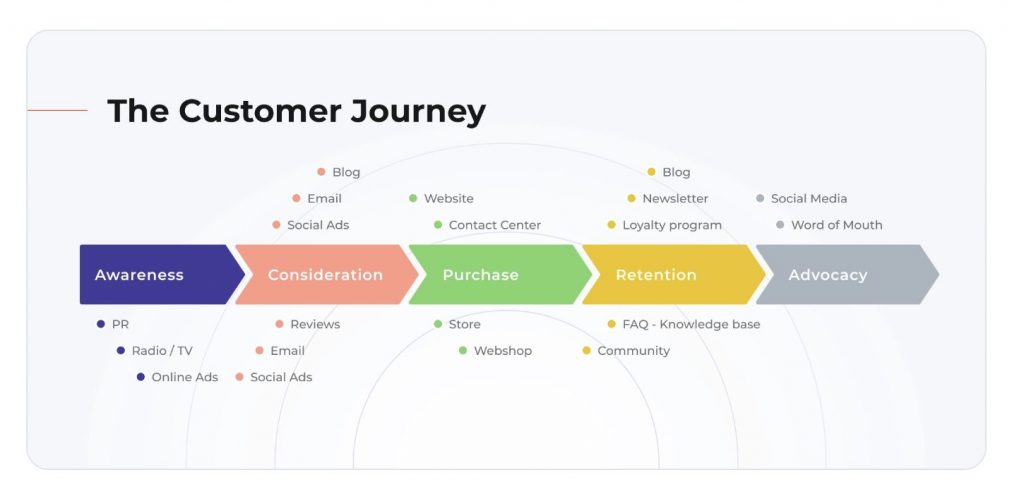
As I had mentioned in my previous article (read the blog post here if you want to learn more about lead scoring models), our clients have quite different conversion funnels and user personas.
For example, Userlike, a live chat software for websites and messaging apps, has an inbound marketing strategy. What works best for them are content assets such as white papers and any other download materials.
On the other hand, AutoLeadStar, a marketing automation platform for car dealerships, focuses on demo calls since they bring the company the highest number of good-quality leads.
A typical day at Worklife
Maybe it’s neither a demo call nor a download material that works for you the best. No worries, you’re not alone.
Sergio Bellon, Worklife’s CGO & co-founder, told us that the best converting channels for them are email marketing and webinar signups.
As you can see, every conversion path is unique.
That’s why you need to map out which channels and activities convert the best for your business and after that, get started with your own lead scoring formula.
But before that…
3. Align sales and marketing goals
You know your personas like your family, you talk about each tiny step in the funnel for hours, and are ready to set a lead scoring strategy. Great.
But, what about the other team?
This refers to sales if you’re a marketer or the other way around.
Marketers bring in leads from various channels and optimize well-performing tactics.
On the other hand, sales are in direct contact with leads and it’s easier for them to identify new trends, historical patterns that work (or don’t work), and hidden opportunities.
To me, this sounds more like a power couple rather than two teams working separately or having a clash of views.
Sales teams can share insights into the best-converting lead segments so that Marketing teams can optimize these channels. The best practice would be that both teams sit together, combine their expertise, incorporate historical patterns, and formulate their own lead scoring approach on a regular basis.
Carrie Shaw, CMO of Copper, says that they have a weekly pipeline review with sales and marketing leaders that goes right through the funnel, from top to bottom. Their goal’s to align sales and marketing strategies.
As a CMO, my team and I are in service to our sales team. This leads to a culture of respect, cooperation, and reciprocation.
Carrie Shaw, CMO of Copper
Marketing and sales complement each other. That’s why a lead scoring strategy lacking input from any of the teams is likely to fail and cause a disconnection between teams.
Make sure marketing and sales teams align on the high-converting touchpoints in the funnel, before you…
4. Decide on a lead scoring threshold
Zendesk defines the lead scoring threshold as the point value where a prospect is considered sales-ready.
If you have already identified your user personas, dug out the best-performing touchpoints in your customer journey, and aligned goals with the sales or marketing team, you’ll find that one relatively easy to do.
Simply put, you’ll assign higher scores to the touchpoints that have brought you the highest conversion and vice versa.
As mentioned earlier several times, lead scoring models help define the context to assign the values to each lead in the pipeline.
In general, the lead scores are based on a point range of 0 to 100. To get started, the lead scoring threshold can be an arbitrary number.
Here is an example from Outfunnel.
This is what our lead scoring formula looks like (for now).
Once you have assigned scores to each touchpoint, you can set a threshold, so once a lead reaches and surpasses that point, sales reps receive a notification.
Setting a relevant threshold helps maximize your sales potential, and the goal should be to focus on the leads that climb up the score ladder and surpass the threshold.
But sadly, some of them will not be able to manage that although they may seem promising at first, meaning…
5. Include negative scoring in your formula
By assigning positive scores, you push the leads closer toward an MQL.
What about the leads coming into your database but their profile is not that welcome by your marketing and sales strategy?
Maybe they’re coming from a country where your product does not work or you spotted them on your Career page which means they are not prospects at all.
This means they simply do not match your ICP (Ideal Customer Profile) and need to have a lower score than the others with negative scoring.
In other cases, the action that requires a negative scoring can be an email unsubscription or low engagement rates.
They can also stop interacting with your content for a certain period of time. Here is an example of how to proceed when the sales cycle is long:
- After 60 days of no action: Reduce 10 points
- After 90 days of no action: Reduce 25 points
- After 120 days of no action: Reduce 50 points
In our case, we focus on leads using Pipedrive, Copper, Hubspot, or Salesforce as their CRM.
If a lead is interested in our tools but does not have CRM software in place, then, sadly, we cannot help.
So, we simply implement a negative score for this segment and assign a high score for the ones using the software mentioned above.
Start scoring your leads and increase led-to-win conversion rates by 25%
Deep integrations with CRMs like Pipedrive, HubSpot, Copper, Salesforce
6. Create separate lead scoring formulas for different product segments
Are you working in a medium-sized company with multiple product lines? Or maybe you’re in the marketing or sales department of an enterprise.
If so, chances are you’re dealing with different products/services thus having different personas, funnels, and touchpoints.
On top of that, there may be multiple sales and marketing teams responsible for each segment.
So, I guess this won’t come as a surprise if I say that you will need to create different lead scoring formulas, each addressing the aforementioned aspects of your existing products.
The more the formula reflects the journey for the product in particular, the happier sales reps will be, since they’ll be running a marathon of closed deals.
7. Refine and update your lead scoring strategy regularly
Lead scoring is a flexible and dynamic method that can change over time depending on the shifts in your strategy, your customer journey, and audience segments.
You can deploy a new marketing tactic in social media and start converting more leads coming from LinkedIn.
This means you will need to add a new attribute to your formula or increase that of social media while balancing it out across the other touchpoints.
For today, your winning touchpoint may be the content assets that can be downloaded from your website. Who knows, maybe next year it will be webinar attendance?
Just rewind to three years ago. Were webinars or online courses that popular? Not really. They were still there but did not have a strong weight as they have today.
For most B2B businesses, physical events such as trade fairs, exhibitions, or seminars were mandatorily replaced by online events due to COVID-19 since 2019.
I don’t want to imply a new virus wave. What I’m trying to say is that once you’re done with these seven best lead scoring best practices, it does not mean that it is done for good.
You’ll still need to refine and optimize your lead scoring formula based on any changes that happen in the conversion path.
So what can we conclude?
Marketing teams spend lots of time and energy finding good leads, and so do sales teams, in order to convert these leads and increase the number of closed deals on neverending spreadsheets.
Lead scoring can help optimize these processes by minimizing the guesswork and setting a structure across different pipelines for both teams.
To get the most out of your lead generation strategy, make sure you deploy the lead scoring best practices step-by-step rather than starting with assigning scores right away.
The stronger the base is, the stronger the building is!
How can Outfunnel help you with lead scoring?
You can easily sync your sales and marketing efforts for better conversion using Outfunnel’s Lead Scoring Software.
Sign up for a free trial today, and you can:
- use web and email engagement to highlight qualified leads
- automatically calculate lead scores based on engagement
- record lead scores in the CRM so the sales team can have full context

